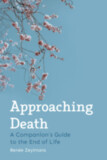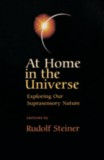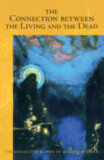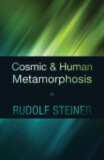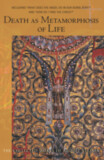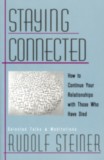How the Spiritual World Projects into Physical Existence
The Influence of the Dead (CW 150)
- Publisher
Rudolf Steiner Press - Published
16th January 2015 - ISBN 9781855844049
- Language English
- Pages 160 pp.
- Size 6" x 9"
10 lectures, various cities, Jan. 12 – Dec. 23, 1913 (CW 150)
“By cultivating spiritual thoughts here on Earth we can provide nourishment for the dead.... When fields lie fallow, they produce no crops to feed humanity, and people may die of starvation. The dead cannot die of starvation, of course; all they can do is suffer when spiritual life lies fallow on Earth.” — Rudolf Steiner
The founding of the Anthroposophical Society in 1913 marked a major change in Rudolf Steiner’s work. Although Steiner had always been an independent spiritual researcher, the break with the theosophists removed all constraints, allowing for a full flowering of Anthroposophy. These lectures, presented to audiences in Germany, France, and Sweden, are filled with a freshness and vitality that reflect this new beginning, providing intriguing glimpses of great themes that Steiner was to develop in the years ahead.
Death is a predominant topic here. Rudolf Steiner explains how people on Earth can reach the dead in a non-mediumistic way and how such interaction between “living” and “dead” is mutually beneficial. He states that people who do not recognize the being of Lucifer during their earthly life—those who have not “already got to intuit and know the luciferic impulses in the human soul properly while here in life”—will be “vampirized” by that being after passing through the gate of death. Steiner elaborates on the activities of the adversarial beings in today’s civilization—spiritual powers that play a needed role in Earth’s evolution—and how we can counteract them. The longer we can stay alive, for example, the greater the victory over Ahriman’s activity. Even losing one’s teeth has beneficial aspects, allowing us to “gain certain impulses, and these overcome Ahriman.” Steiner relates the actions of such spiritual entities to child development, too, indicating the various influences in the seven-year cycles of growth.
Also included are lectures on the Christian festivals and various works of art, including The Triumph of Death in the Composanto cemetery at Pisa, which reveals great secrets of humanity’s evolution. Whatever subject Steiner addresses, it quickly becomes clear that these lectures were not relevant only to his audience in 1913; they also speak to contemporary souls around the world seeking spiritual direction and understanding.
This volume is a translation from German of Die Welt des Geistes und ihr Hereinragen in das physische Dasein. Das Einwirken der Toten in der Welt der Lebenden (GA 150).
Rudolf Steiner
Rudolf Steiner (b. Rudolf Joseph Lorenz Steiner, 1861–1925) was born in the small village of Kraljevec, Austro-Hungarian Empire (now in Croatia), where he grew up. As a young man, he lived in Weimar and Berlin, where he became a well-published scientific, literary, and philosophical scholar, known especially for his work with Goethe’s scientific writings. At the beginning of the twentieth century, he began to develop his early philosophical principles into an approach to systematic research into psychological and spiritual phenomena. Formally beginning his spiritual teaching career under the auspices of the Theosophical Society, Steiner came to use the term Anthroposophy (and spiritual science) for his philosophy, spiritual research, and findings. The influence of Steiner’s multifaceted genius has led to innovative and holistic approaches in medicine, various therapies, philosophy, religious renewal, Waldorf education, education for special needs, threefold economics, biodynamic agriculture, Goethean science, architecture, and the arts of drama, speech, and eurythmy. In 1924, Rudolf Steiner founded the General Anthroposophical Society, which today has branches throughout the world. He died in Dornach, Switzerland.



